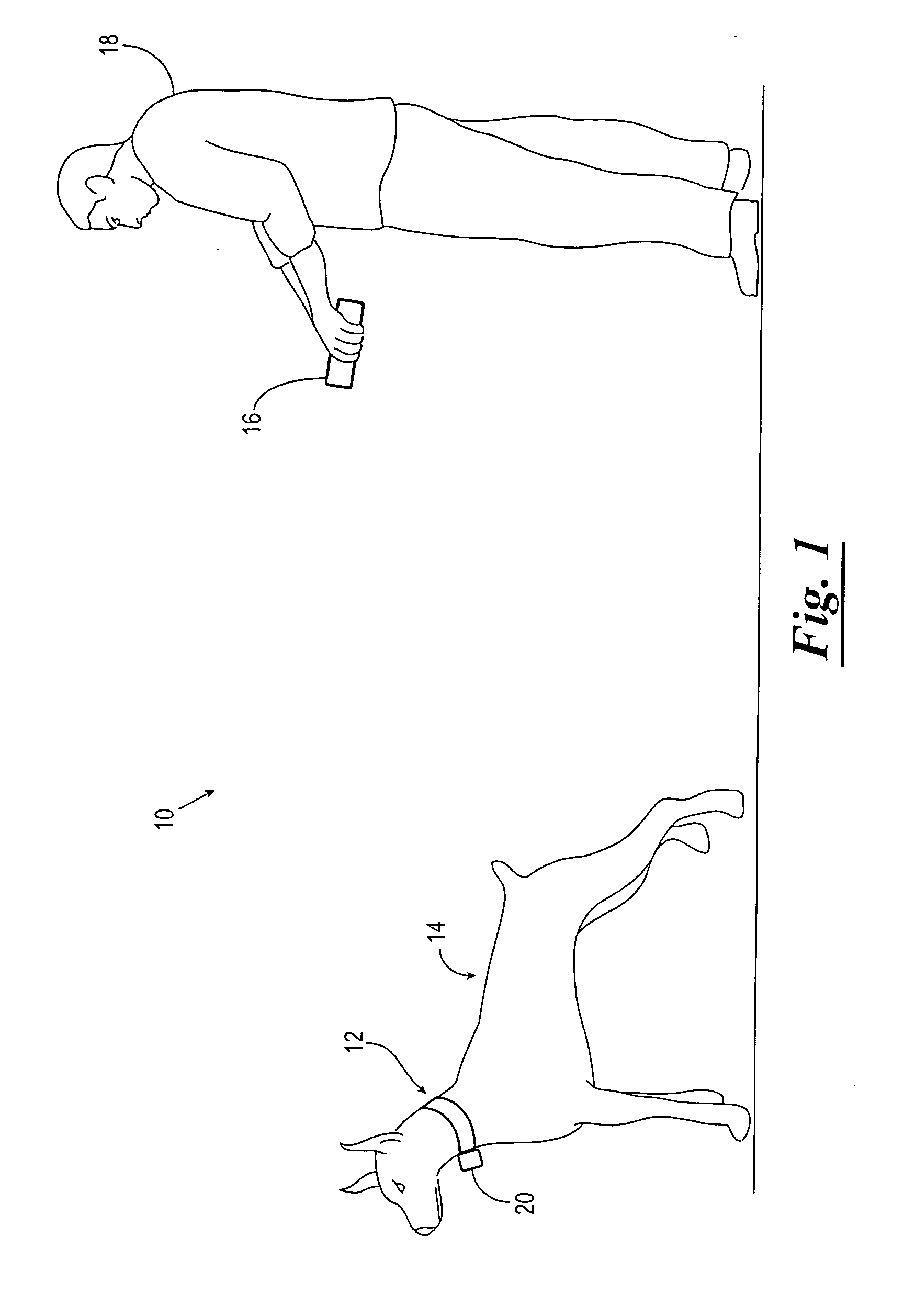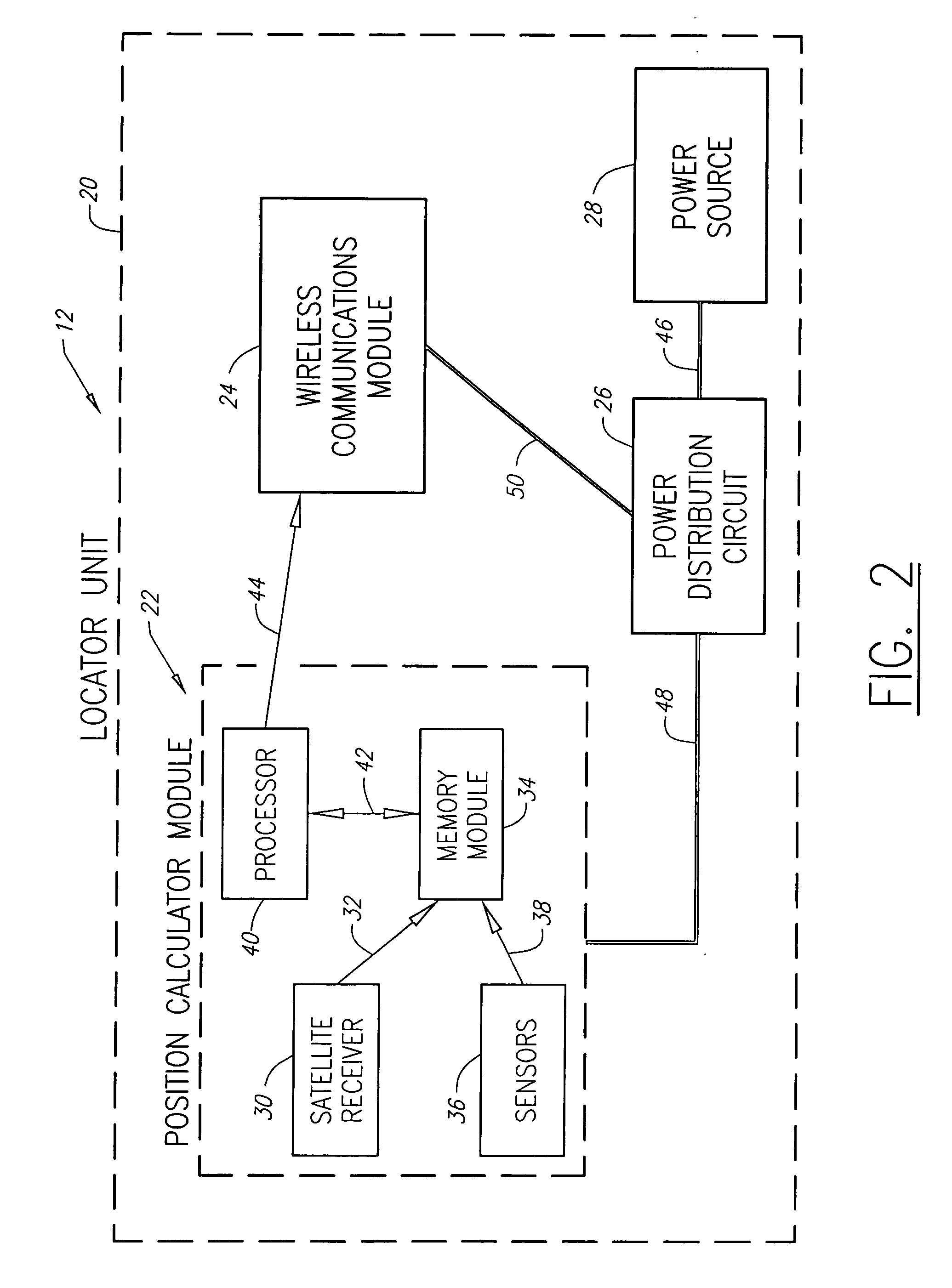Object identity and location tracking system
a tracking system and object technology, applied in the field of objects, can solve the problems of large, more expensive systems for tracking the position of delivery trucks, and poor suited to use on smaller objects, and achieve the effects of improving the accuracy of the detection and detection process, and improving the accuracy of detection and detection
- Summary
- Abstract
- Description
- Claims
- Application Information
AI Technical Summary
Benefits of technology
Problems solved by technology
Method used
Image
Examples
Embodiment Construction
[0019]Referring now to the drawings and more particularly to FIG. 1, an object identity and position tracking system 10 (hereinafter referred to as the system) is shown. The system 10 includes one or more locator units 12, each attached or coupled to an object 14 such as a dog, child, person, car, or the like; and one or more display units 16, each disposed so as to be available to a user 16. The locator unit 12 calculates the position of the object 14 by obtaining satellite position data through known satellite positioning methods. The locator unit 12 then measures local position data, augments the satellite position data with local position data, and outputs augmented position data to the display unit 16.
[0020]The display unit 16 calculates its own position using a similar method and receives the augmented position data from the locator unit 12. The display unit 16 then outputs the position of the locator unit 12 to the user 18 via a user interface. The position of the locator uni...
PUM
 Login to View More
Login to View More Abstract
Description
Claims
Application Information
 Login to View More
Login to View More - R&D
- Intellectual Property
- Life Sciences
- Materials
- Tech Scout
- Unparalleled Data Quality
- Higher Quality Content
- 60% Fewer Hallucinations
Browse by: Latest US Patents, China's latest patents, Technical Efficacy Thesaurus, Application Domain, Technology Topic, Popular Technical Reports.
© 2025 PatSnap. All rights reserved.Legal|Privacy policy|Modern Slavery Act Transparency Statement|Sitemap|About US| Contact US: help@patsnap.com



